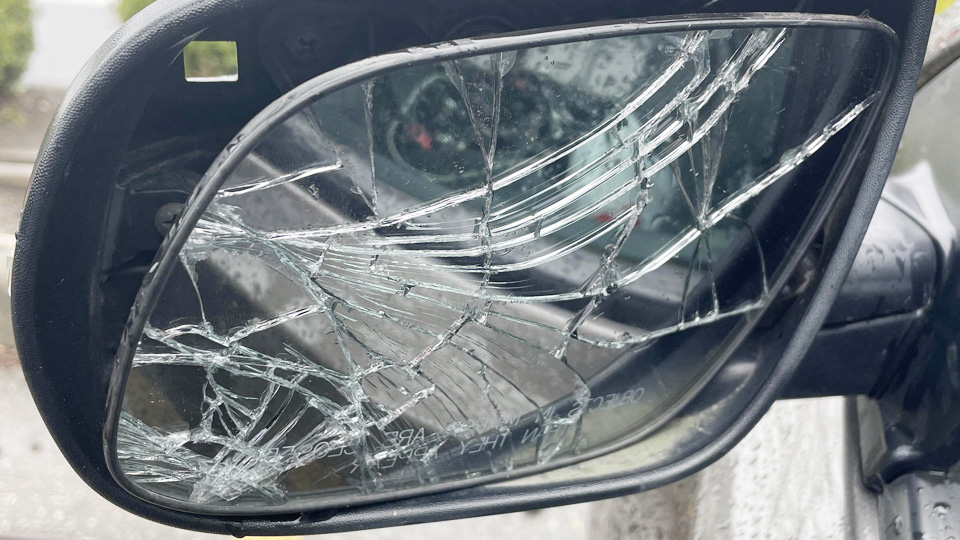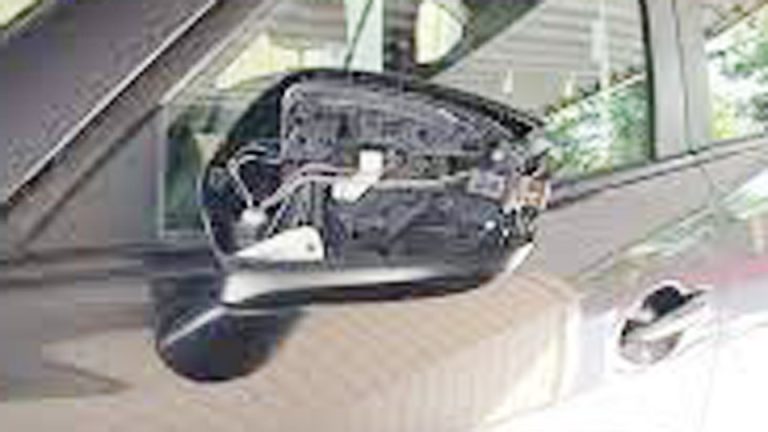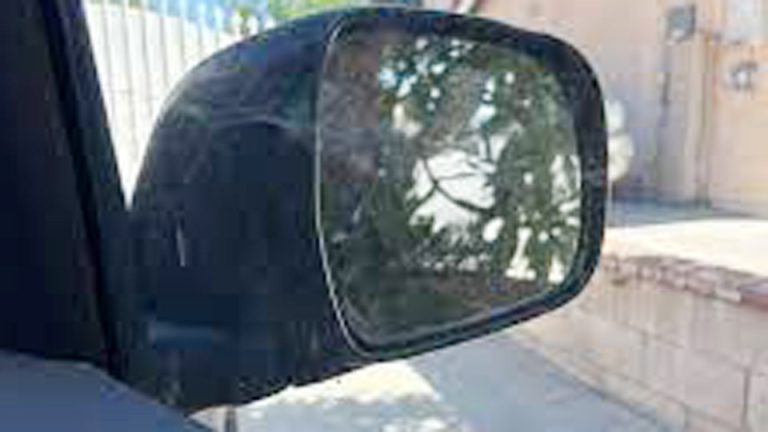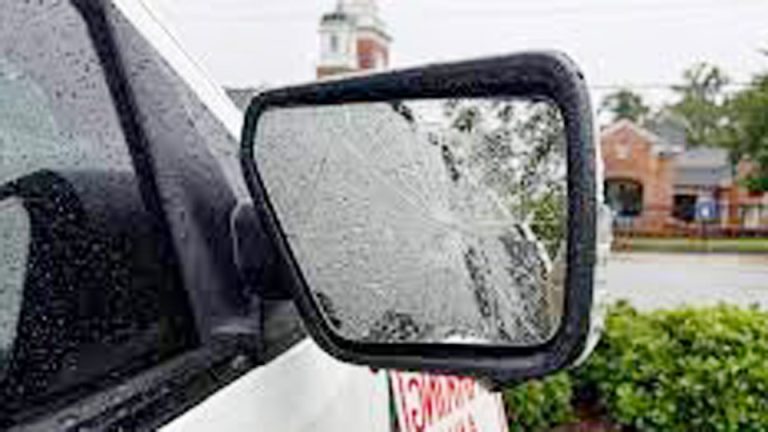I’ve seen it happen more times than I can count: you come out of the grocery store, and your car’s side mirror is dangling by the wires after someone brushed past it—or maybe it just got loose over time. It looks bad, it’s unsafe to drive without it, and the last thing you want is a pricey trip to the body shop.
You don’t always need a mechanic to get it fixed. If the damage isn’t too severe, you can fix a hanging side mirror with glue without professional help using the right adhesive and a little patience. I’ve patched up plenty of mirrors in my own garage and even on the roadside with nothing more than strong automotive glue, a clean surface, and some tape to hold it while it sets.
The key is preparation: making sure the mirror housing is clean, dry, and properly aligned before the glue goes on. Rushing the job or using the wrong type of glue is where most DIY fixes fail. But done right, this method can hold surprisingly well until you’re ready for a permanent replacement—or even serve as a long-term solution if the damage is minor.

Image by reddit
What Is a Side Mirror and What It Does in Your Car
A side mirror, or door mirror, is that adjustable reflective piece mounted on your car’s door. It gives you a view of what’s behind and beside you, essential for lane changes, parking, and spotting cyclists or pedestrians. Most modern ones are power-adjustable, with features like heating to defrost in winter or integrated turn signals for added safety.
In the U.S., these mirrors have to meet federal standards for reflectivity and durability, which is why they’re built tough—but not invincible. They connect to the door via a bracket, often with electrical wiring if they’re powered. From my time pulling apart Chevys and Toyotas, I can tell you the mirror glass sits on a backing plate, which pivots on motors or manual adjusters inside the housing.
Why does this part matter so much? Safety first—without a solid side mirror, you’re blind to about 20% of your surroundings, increasing crash risks. Performance-wise, a hanging mirror creates drag, which might ding your fuel efficiency by a mile or two per gallon on long trips. Cost-wise, ignoring it leads to pricier repairs; I’ve seen folks pay $200+ for what started as a $10 glue job. And reliability? A well-maintained mirror lasts the life of your car, but neglect it, and you’re dealing with rattles that drive you nuts.
Common Problems or Signs of Failure in Side Mirrors
I’ve diagnosed hundreds of mirror issues, and they usually boil down to a few culprits. Physical damage from parking lot dings or garage mishaps is top of the list—I’ve fixed mirrors on Hondas where the owner clipped a pole, leaving the housing cracked and hanging. Electrical glitches, like faulty motors or blown fuses, make power mirrors unresponsive, common in older Fords where wiring frays from door flexing.
Vibration from rough roads loosens mounts over time, causing that telltale wobble. Weather plays a role too; extreme heat can warp plastic, while cold snaps crack glass. In my shop, I’ve seen Volvos with delaminated glass where the reflective layer peels off, or Mazdas where the actuator pops loose.
Signs of failure? A hanging mirror is obvious—it’s dangling by wires or a single bolt. But watch for subtler clues: unusual noises when adjusting, fogging that won’t clear, or mirrors that drift out of position while driving. If it’s electric, no response from the switch points to wiring woes. I’ve had customers bring in Rams where the mirror just “froze,” but a quick fuse check fixed it without tools.
When and Why Replacement Is Needed for Side Mirrors
Not every hanging mirror needs a full swap—I’ve glued plenty back securely. But replacement? That’s when damage is structural, like a shattered housing or fried electronics. If the mirror’s flapping endangers others or fails state inspection (most U.S. states require functional mirrors), it’s time.
Why replace? Safety and legality—driving with a broken mirror can net fines up to $150 in places like California. Performance dips if it’s affecting door alignment, and cost mounts if you wait; a minor fix turns into $300+ for parts and labor. In my experience, DIYers replace when glue fails repeatedly, often on high-mileage trucks like Silverados where vibration is brutal.
Timing matters: Fix it ASAP if it’s hanging, as road bumps can snap wires. I’ve advised folks with Toyotas to replace if the glass is cracked, since shards are hazardous. But if it’s just loose? Glue often does the trick, saving you from $50-200 on a new unit.
OEM vs Aftermarket Side Mirror Options: A Mechanic’s Take
When glue isn’t enough and you’re shopping replacements, the OEM vs aftermarket debate comes up. OEM (Original Equipment Manufacturer) parts come from your car’s maker—like Ford or Toyota—and fit perfectly, matching features like auto-dimming or blind-spot alerts. I’ve installed OEM on premium rides like Audis, and they integrate seamlessly with factory wiring.
Aftermarket? Brands like Dorman, TYC, or K-Source offer cheaper alternatives, often 30-50% less. In the U.S., they’re widely available at AutoZone or O’Reilly, with good compatibility for popular models like the Camry or F-150. Pros of aftermarket: affordability and variety—think upgraded towing mirrors for Rams. Cons: Potential fit issues or lower durability; I’ve seen cheap ones vibrate more.
OEM pros: Exact match, warranty coverage, reliability. Cons: Pricey, sometimes $200+ per side. I’ve compared them head-to-head in my garage—OEM feels premium, but for budget builds, aftermarket holds up fine if you pick reputable brands.
Here’s a quick comparison table based on my installs:
| Aspect | OEM | Aftermarket (e.g., Dorman) |
|---|---|---|
| Price | $150-400 | $50-200 |
| Fit & Compatibility | Perfect for specific models (e.g., 2015-2020 F-150) | Good, but check reviews for fits on Chevys or Hondas |
| Durability | High, lasts 10+ years | Variable, 5-8 years typical |
| Features | Matches original (heated, signals) | Often adds extras like LED lights |
| Availability | Dealer or online (e.g., RockAuto) | Everywhere in U.S., fast shipping |
| Warranty | 1-2 years | 1 year typical |
From personal anecdotes, I once swapped an OEM mirror on a customer’s Subaru after an aftermarket one failed in six months—lesson learned: Stick to trusted aftermarket for non-critical features.
Step-by-Step Guide: How to Fix a Hanging Side Mirror with Glue
Alright, let’s get greasy. I’ve done this fix on everything from sedans to SUVs, and it’s straightforward if you’re careful. This method works without major disassembly, assuming the housing is intact but loose.
First, assess the damage. Park in a well-lit garage, support the mirror with tape to prevent further drop. Clean the area—use isopropyl alcohol to wipe glue surfaces; dirt ruins bonds.
Choose your glue. From my trials, automotive silicone adhesive like Loctite or 3M works best—flexible for vibration. Avoid regular superglue; it cracks in weather. I’ve used Gorilla Glue on a hanging Chevy mirror, and it held for years.
Step 1: Disconnect power if electric. Pop the door panel (pry clips gently) and unplug wires to avoid shorts.
Step 2: Remove loose parts. If glass fell off, carefully extract shards with gloves.
Step 3: Apply glue. Bead it on corners and center—about 3/8 inch thick, 1/2 inch from edges. Press firmly for 30 seconds.
Step 4: Secure while curing. Use duct tape or clamps; I’ve MacGyvered with zip ties on a Toyota.
Step 5: Wait 24 hours. Test gently—no highway speeds yet.
Common mistakes? Rushing cure time—I’ve seen re-breaks from that. Or skimping on cleaning; glue fails fast. Pro tip: For heated mirrors, ensure glue doesn’t block elements.
In one workshop story, a buddy’s Volvo mirror delaminated mid-drive. We glued it with epoxy on the spot, taped it overnight, and it outlasted the car.
Best Glues for Side Mirror Repairs: My Tested Picks
Not all glues are equal—I’ve experimented plenty. Top pick: Loctite Automotive Silicone for its elasticity and weather resistance; held a hanging Honda mirror through Midwest winters. JB Weld epoxy is great for structural fixes, like when I repaired a cracked housing on an F-150.
Gorilla Glue expands for gaps but needs clamping. 3M adhesive tape works for quick glass reattachments. Pros of silicone: Flexible, waterproof. Cons: Longer cure. For U.S. availability, grab at Home Depot or Amazon—prices $5-15.
Avoid household glues; they brittle in heat. I’ve answered customer questions like, “Will superglue work?”—nope, vibrations kill it.
Installation Tips, Maintenance, and Common Mistakes
Even with glue, installation smarts matter. Tools? Basics: Screwdrivers, tape, alcohol wipes. Safety first—gloves for shards, disconnect battery for electrics.
Maintenance: Clean mirrors weekly with glass cleaner; check mounts monthly. Lubricate pivots with silicone spray to prevent seizing.
Mistakes I’ve fixed: Over-tightening bolts, stripping threads. Or ignoring alignment—adjust post-fix for proper view. For compatibility, match to your model; a Camry mirror won’t fit a Silverado.
Anecdote: Fixed a customer’s Mazda where the mirror hung after a fender-bender. Glued and taped it; she drove off happy, saving $150 on replacement.
Tips for Identifying Genuine vs Fake Side Mirrors
Spotting fakes saves headaches—I’ve seen knockoffs fail fast. Genuine OEM has manufacturer stamps (e.g., Ford logo) and precise fit. Check packaging: Real parts have holograms or serials.
Fakes? Poor glass quality, distortion, or mismatched colors. In U.S., buy from reputable spots like dealerships or NAPA. Test: Genuine mirrors adjust smoothly; fakes wobble.
I’ve pulled fake mirrors off eBay buys—vibration city. Pro tip: Scan QR codes on boxes for authenticity.
Pros and Cons of Different Side Mirror Options
Beyond glue, options vary. Manual mirrors: Cheap, reliable pros; no features cons. Power: Convenient, but electrical fails.
Towing mirrors (e.g., for Rams): Extend visibility pros; bulky cons. Heated: Defrost fast; pricier.
US examples: Dorman aftermarket for budget, OEM for luxury like BMWs.
Keeping Your Side Mirrors in Top Shape: Long-Term Advice
Regular checks prevent hangs. Tighten bolts yearly; I’ve nipped issues on my own truck that way. Wash gently—no pressure washers on seams.
For efficiency, aligned mirrors reduce drag. Reliability tip: Upgrade to aftermarket with better seals if you off-road.
Story: Helped a student mechanic fix his first hanging mirror on a Civic—glued it, taught him cleaning’s key. Now he’s pro.
ConclusionSide Mirror Fixes
Fixing a hanging side mirror with glue is a solid DIY win for safety, savings, and keeping your ride reliable. Whether sticking with OEM for perfection or aftermarket for value, prioritize quality and fit. Act fast on looseness to avoid bigger bills. Final pro tip: Always test drive slowly after gluing—vibrations reveal weak bonds early. Drive safe out there!
FAQ
What causes a side mirror to start hanging loose?
Vibration from driving, minor impacts, or worn mounts are common culprits. I’ve seen it most on trucks like F-150s from potholes shaking things free—tighten early to prevent.
Is it safe to drive with a hanging side mirror?
Not really—it’s a distraction and visibility hazard, plus illegal in most states. Tape it temporarily, but fix ASAP; I’ve had customers get pulled over for it.
How much does a professional side mirror repair cost in the US?
Expect $100-300, depending on model. DIY glue is under $20; I’ve saved folks hundreds by showing them how.
Can I use regular household glue for car mirrors?
Skip it—too brittle for weather and vibes. Automotive silicone or epoxy holds better, as per my shop tests.
What’s the difference between heated and non-heated side mirrors?
Heated ones have elements to clear fog/ice, great for cold climates. Non-heated are simpler, cheaper; I’ve swapped to heated on a Subaru for winter reliability.



